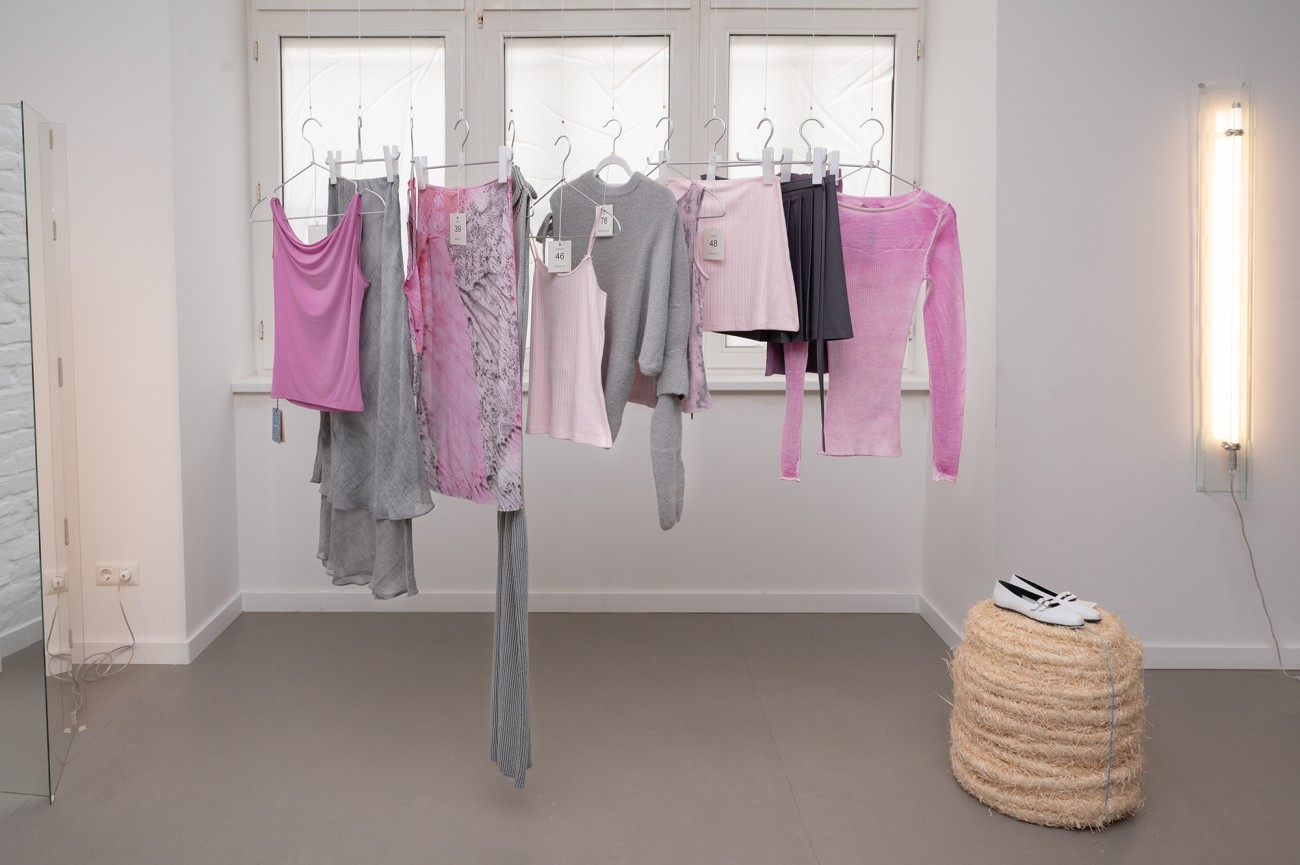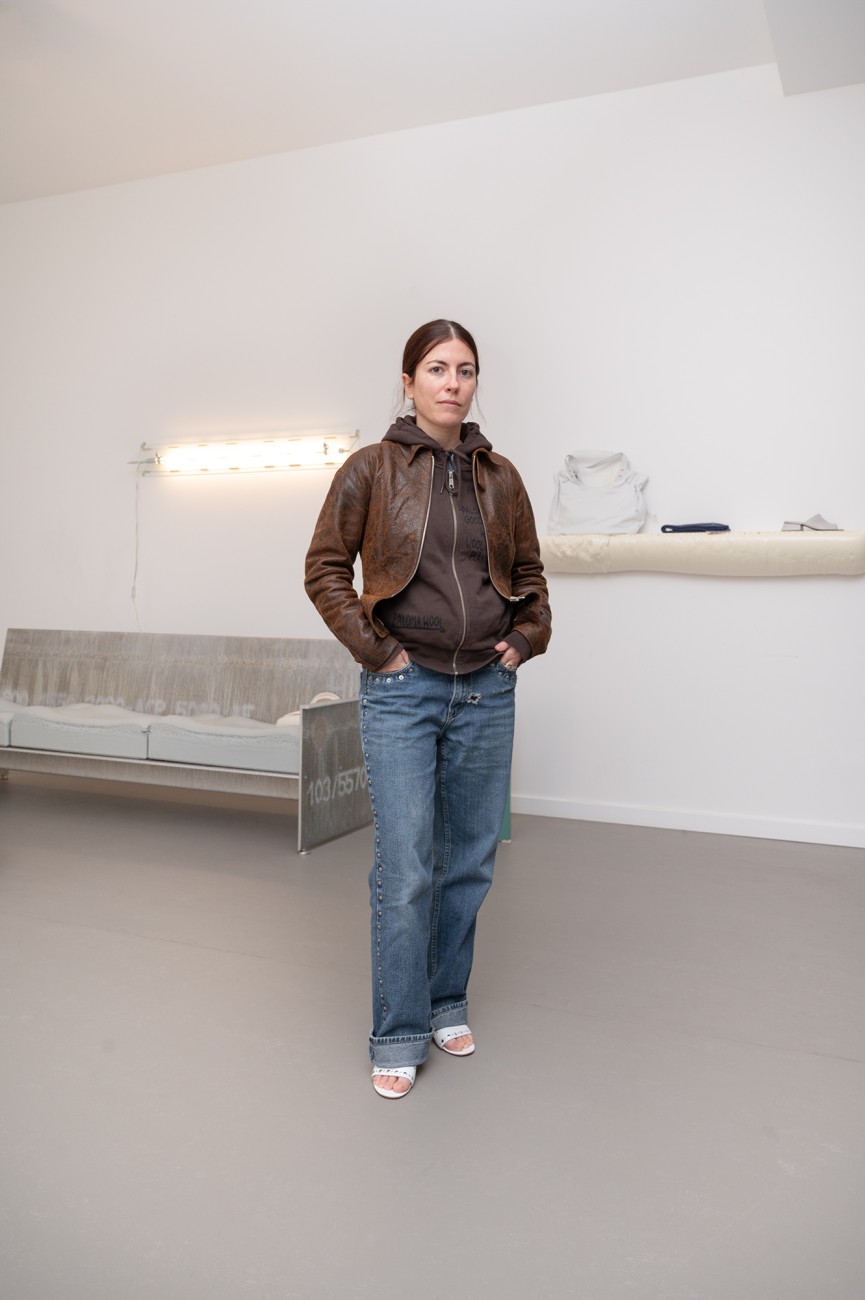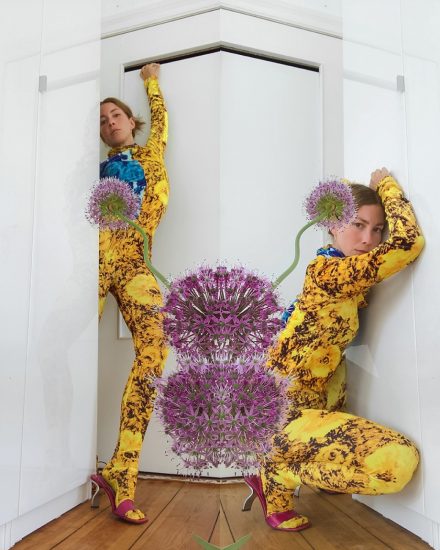Almost ten years ago, Paloma Lanna founded her baby Paloma Wool, and with time passing, she is now holding her own three-month-old in her arms. Back in 2014, it started as her own personal project, a breach out of the continuing family clothing brand her mother and she ran, serving just as a place where she allowed others an insight into her way of viewing the world. Her vision manifested into clothing which for a long time was full of colours and adorned with prints, heavily inspired by her surroundings and home Barcelona. But with change being an inevitable and organic process in life, Paloma evolved and so did Paloma Wool. And the true beauty of it all lies in the world also constantly growing, meaning the tight-knit community behind Paloma essentially growing with her. Being much more than all about beautiful clothes, there is a sense of community at Paloma Wool, creating a world in which everyone is invited to also become part of her little family.


Some things don’t change though. The heart of Paloma Wool still lies in Barcelona with its open-hearted and collaborative way of living translating to the label’s values. Working with local manufacturers since its beginnings, the feeling of togetherness initially started from within the brand, thus even making it able to paint that picture for everyone else to see.
As an initiative to bring the clothes from online to offline, Paloma Wool started doing world tours around the globe as in pop-up stores, traveling as far as the USA to Asia like little rockstars. With this year’s first stop being Berlin, we met with designer Paloma Lanna and creative director Tana Latorre to talk about growth, the people behind Paloma Wool, and their sustainable production process.

Œ: Paloma Wool started as an artistic project, being more than just another fashion brand. What triggered the feeling that the world needs much more than only creating beautiful clothes?
Paloma: Something inside of me wanted to have something that was coherent with my values and ethics. When I worked for my parent’s brand I learned how the fashion industry, at least the conventional one, works and felt the urge to build something different. Photography and art in general always have been important to me, so my vision was to create a project that was balanced between the clothes and everything that surrounded it. It started with my friends and the symbol of friendship stayed as one of our main values as well as producing locally.
Œ: The sense of amity is strong at Paloma Wool and also translates to what you put out. But what beauty or even hardships lie in mixing personal relationships with business?
Tana: It’s surprisingly not complicated. I have been working with Paloma on the project for the past ten years now and I haven’t had a bad day in my life. There is no hierarchy, anyone is very much involved in everything and also we’re in an open space which helps us to be familiar with what is happening. We are a total of 20 women always supporting each other, creating a very collaborative atmosphere. After we design one piece, it will be us who are trying it on, all with different bodies and different shapes.
Œ: Undeniably, womanhood stands out as your core brand identity. How do you visualize something abstract like female bond in your design language?
Tana: I think it just reflects everything that is going on behind. One of the pillars at first was about the beauty of women helping each other. Paloma is part of a strong artistic community in Barcelona, her best friend Carlota Guerrero, who is a photographer and artist, has been working closely with Paloma Wool since its beginning and together, we have been evolving. The part of female bond and mutually respecting and helping each other then just flows naturally in what we create.

Œ: To express your vision, photography plays a big role at Paloma Wool. At what point in the process of developing an idea does photography become important?
Tana: There is a crucial thing in the process of designing that Paloma does, which is always keeping in mind what it will look like in images later. The act of photographing just becomes one with the act of designing a piece.
Paloma: It is not the same to see a piece in real life than in an image. Everything in my mind is centered around the photograph rather than just around creating an item. During the process of designing, I am already thinking about how to style the piece and how the model will wear it. Photography has been close to my heart for ages now, back then we even sold sweatshirts with my photographs printed on them at Paloma Wool.
Œ: Over time, Paloma Wool has experienced immense growth and has built its own strong community. With continuously growing bigger, how do you still keep the sense of intimacy?
Paloma: Because it is what it is. The project is very personal and moves parallel to my personal life, capturing how I feel and how I am slowly growing old. Also what is making it feel intimate and completely like me is that I feel proud of what we are doing because if not it is better not to bring even more things to the world.
Œ: Growing bigger also means change. The past collection seems to go in a new direction, having a touch of nostalgia in them. What development has Paloma Wool made in recent times?
Tana: We made shoes a few months ago that Paloma had as a teenager. For the past collection, we went back and looked at things in fashion we wanted, thus making it kind of nostalgic or vintage looking.
Paloma: Our last collection felt very new because we decided to break with what we had been doing the last couple of seasons. Before we were very centered around prints and colours, I got oversaturated and started to pay more attention to shapes and patterns. We used new fabrics and knitwear, moving into other spheres which all felt interesting to me.

Œ: One thing has stayed the same though which is timelessness. How do you combine that with change?
Tana: Timelessness has been deeply rooted in Paloma Wool since its start because we were not following the traditional fashion cycle production and Paloma didn’t believe in a piece you only wear once. Our pieces are wearable not only the whole year but also throughout the day, putting on our clothes to go out for dinner or to stay at home with your cat.
Paloma: And I think the pieces respond to my own style and my universe, not to particular trends. It created a natural evolution of what we were designing back then, meaning how I used to dress versus how I dress now. Being pregnant also changed Paloma Wool because my own body changed. The brand matures with every step that I take and it is an exciting thought to see where it will go.
Œ: With the subject of timelessness, sustainability comes hand in hand. Are there any sacrifices to be made when wanting to stay sustainable?
Paloma: Yes, a lot of sacrifices. It happens so many times that we love fabrics but then they have polyester in it. Our goal is definitely to make beautiful clothes but not at any cost. Regarding sustainability, the industry is so much more aware now and we really felt that in Spain throughout the years. Our suppliers are continuously growing stronger and have been doing some innovation, essentially also growing stronger with us.
Tana: When we started, the industry for sustainable production was very small and it was difficult to find someone to produce with. Now it is something that is definitely developing and it is really fun to see what you can do together as a team. We are designing pieces together and with them becoming more sustainable we are, too. Our suppliers are in our studio every week and then we are discussing new fabrics and techniques, a lot is happening right now.

Œ: Creating a community also means to stay accessible. How do you keep pushing those values?
Paloma: My initial idea was that I wanted my friends to wear Paloma Wool, so it was important that it was accessible for them. I never wore very expensive clothes, it was always just Paloma Wool or vintage. Even though now we are starting to do more expensive pieces because we are experimenting with a wider range of materials, we still produce clothes that someone can afford. In the end, Paloma Wool is all about inclusion and our community, that we want everyone to also be able to take part in.
Photographer: Pheline Açil
Photo Assistant: Tobias Kruse





